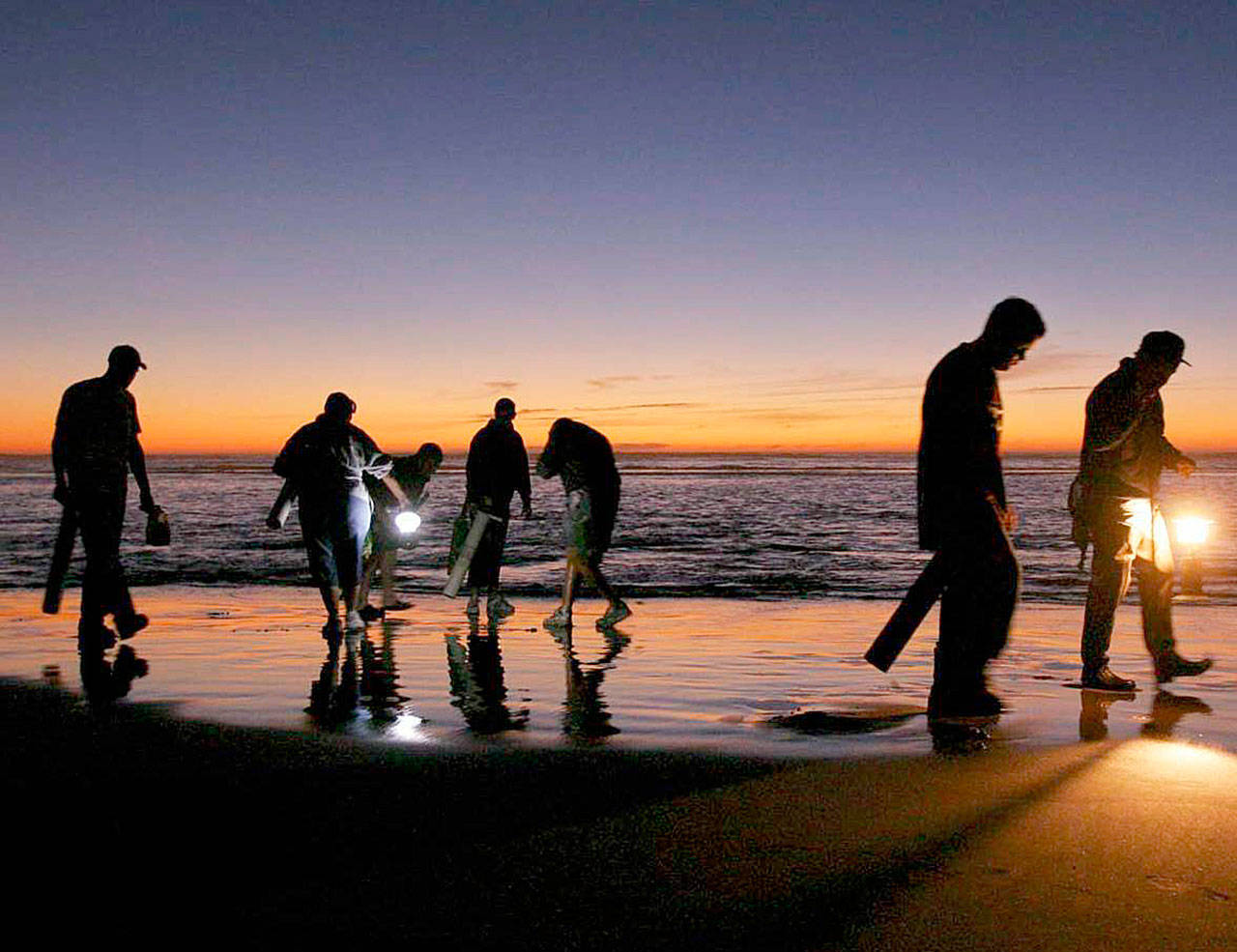A PROMISING RAZOR clam season is in dire straights as spiking levels of domoic acid in the razor clam population along Pacific Ocean beaches have put a halt to proposed razor clam digs set for Nov. 13-19, thrown a wrench into future digs and could mean an early end to the entire season for Twin Harbors.
Increased levels of domoic acid were discovered in clam samples taken Sunday by the state Department of Fish and Wildlife and tested by the state Department of Health.
Domoic acid, a natural toxin produced by certain types of marine algae, can be harmful or even fatal if consumed in sufficient quantities. Razor clams absorb domoic acid into their fat cells and can retain it there long after the ocean water is free of toxins, said Dan Ayres, coastal shellfish manager for Fish and Wildlife.
Department of Health protocols requires that all razor clam meat tissue samples collected from that beach must test under the action level, in this case 20 parts per million (ppm) for domoic acid, on both of the two required sample collections.
Testing revealed domoic acid levels of 60 to 83 ppm for Twin Harbors; 57 to 60 ppm at Long Beach; 20 ppm at Kalaloch Beach; 23 ppm at Copalis and 11 ppm at Mocrocks.
Ayres said Mocrocks is soon expected to eclipse the action level.
The highest recorded level of domoic acid in state testing is 169 ppm at Twin Harbors in May of 2015. Twin Harbors’ clam population couldn’t recover in time to open for the 2015-16 season. And that could be the case again this season.
More samples will be collected in mid-November.
Ayres said Fish and Wildlife and “our colleagues in the Olympic Region Harmful Algal Bloom partnership will continue on-going counts of harmful algae cells and the levels of domoic acid produced and present in surf zone water samples.”
Salmon genetics
In an Outdoors column last week, I compared and contrasted two recent articles on the Elwha River, including one that said the 100-pound Elwha kings of the past were likely spring chinook. I didn’t use the word ‘likely’ in the column and I should have, especially since a recent Science magazine research report shows the timing of salmon migrations is controlled by a small section of their genome, determining whether they return to rivers in spring or fall.
A story on the study, which focused on the Klamath River in southern Oregon, but has connections up and down the West Coast, is available at tinyurl.com/PDN-SalmonGenes.
Dam construction in the west blocked spring-run chinook, which previously had been able to reach upriver habitat because of higher spring water flows, from much of that spawning habitat.
The scientists identified the gene region influencing migration with whole-genome sequencing and examined the pattern in more than 500 kings caught in the Klamath estuary by the Yurok Tribe, finding that genetic variation results in “almost all of the difference between spring- and fall-migrating chinook.”
Chinook salmon migration timing “is a simple consequence of what version of this gene region they inherit from their parents,” said the study’s senior author John Carlos Garza, leader of the Molecular Ecology and Genetic Analysis Program at the Science Center and an Adjunct Professor at the University of Santa Cruz.
Even more interestingly, “detailed genetic analysis also showed a long history of interbreeding between spring- and fall-migrating fish in the Klamath River system and likely others on the West Coast. Coupled with the simple genetic difference between spring- and fall- migrating fish, this means that full siblings from the same chinook salmon nest, or redd, may turn into either spring- or fall-migrating chinook,” the difference depending on which two versions of the gene they inherit from their parents.
The study shows that genetic variation for early migration still exists in the species and that spring-run chinook could re-emerge from their fall counterparts in places where they have been lost like the Elwha, with the addition of kings carrying the early migration genes.
________
Sports reporter Michael Carman can be contacted at 360-406-0674 or mcarman@peninsuladailynews.com.

